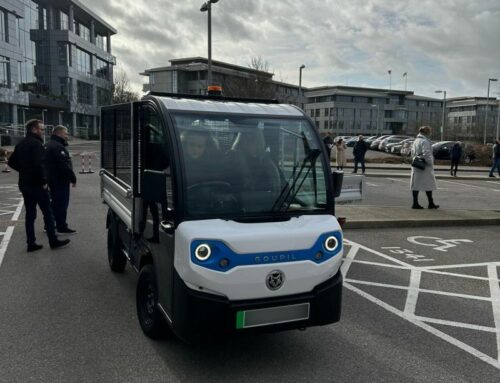By Simon Simmons, LCV National Corporate Sales Manager, Alphabet GB
THERE is no denying that the electrified vehicles (EV) market is taking off and, with an increased focus on climate change following COP26 last year, sustainability has become a significant differentiating factor for businesses.
With this, conversations are now starting to move to global supply chains. Wired recently published an article looking at why sustainable supply chains and procurement policies should be the next area of focus for businesses looking to ‘go green’. Facilitating last mile deliveries and forming work vehicle fleets, Light Commercial Vehicles (LCVs) often play a central role in supply chains and the electrification of LCVs is one way organisations can look to reduce carbon emissions and help meet their sustainability targets.
Although there are already some existing eLCV fleets, many more companies still need to make the change to reach net zero requirements.
Whilst fleet managers were initially reluctant to switch to eLCVs, citing charging infrastructure and battery ranges as primary concerns, recent advancements in battery technology and continued investment in charging solutions mean the industry can now consider eLCVs a viable option for a modern-day fleet. Fleet managers are in a position to kickstart the transition to electric today.
Removing range anxiety
eLCV adoption was initially slowed by range anxiety, and in some cases these concerns were understandable. Early eLCVs launched in the market were limited in battery range and did not provide a suitable business proposition for the miles LCVs are required to travel. Vehicle and load size can also impact battery range and potentially increase charging frequency – another factor that has held eLCVs back in the past.
This is now no longer the case for most businesses. Development of the vehicles and batteries themselves means that journey range has increased to circa 200 miles according to the latest WLTP figures, which is more than sufficient for small to medium sized vans and the mileage required by those using these vehicles. We are currently helping Believe Housing transition its fleet to EVs, supporting an average daily mileage of around 100 miles, for example. This is a realistic representation of LCV mileage and well within eLCV range.
Whilst it is important to note that journey range does differ with payload and is something for businesses to consider, the impact of payload on eLCV energy consumption is largely comparable to diesel LCV fuel consumption. Diesel LCVs show around a 20% increase in fuel use for a 75% payload versus a 0% load and fleet managers can expect to see similar eLCV performance compared to previous diesel fleets.
Charging forwards with infrastructure innovation
The boom in EV adoption has been mirrored by a surge in charging infrastructure across the UK, but charging still remains a new part of the fleet journey for many. For eLCVs that are returned to a depot at the end of a day, charging is relatively simple and working with the right partner will ensure businesses are set up for this. However, for employees charging at home, the alternatives of home or curb side charge points need to be considered.
As part of the UK’s transition to electric, curb side charging points are becoming increasingly common with street furniture being adapted to enable charging capabilities in some areas. Portable EV chargers are also currently in the prototype stage and set to bring ‘home charging’ ability to those who are currently unable to plug-in at their house. There is progress still to be made, but it’s clear that a lot has now moved forward when it comes to charging infrastructure, enabling EVs to be a viable option for more of the country.
Businesses in both the leasing and EV space are also working on progressing charging infrastructure as quickly as possible and supporting new EV drivers with their vehicles. Alphabet, for example, partnered with Shell Recharge Solutions in the summer of 2020 to simplify the charging journey for Alphabet drivers and provide customers both at home and in the workplace with charge points. This partnership to supply customers with charge points helps create an easy and stress-free EV transition.
The bottom line
For fleet managers, the main hurdle to making the switch to eLCVs, can be persuading the wider business that it is a viable option financially. The upfront cost of EVs can be daunting, however when Whole Life Cost (WLC) is taken into account, the figures become much more accommodating.
Firstly, the fuel cost per mile is much cheaper for electric vehicles. With diesel currently at around £1.49 per litre, LCVs can be costly to run with their 100 miles daily when compared to electric, coming in at around 5p a mile, under a third of the cost. The high daily mileage means that these savings will swiftly reduce the initial expense and this is before tax savings for businesses have been considered. And with Benefit in Kind tax relief remaining at competitive rates for the coming years, employees essentially receive a pay rise from personal savings made in tax.
There are many benefits in transitioning fleets to eLCVs, not only for green credentials, and positive brand uplift, but from a business perspective too. The key is that fleet managers act now and begin the introduction of electrified LCVs into their fleets sooner rather than later. This will enable businesses to better understand the vehicles and new technology, providing time to develop their fleet and ensure it meets operational requirements.







Leave A Comment